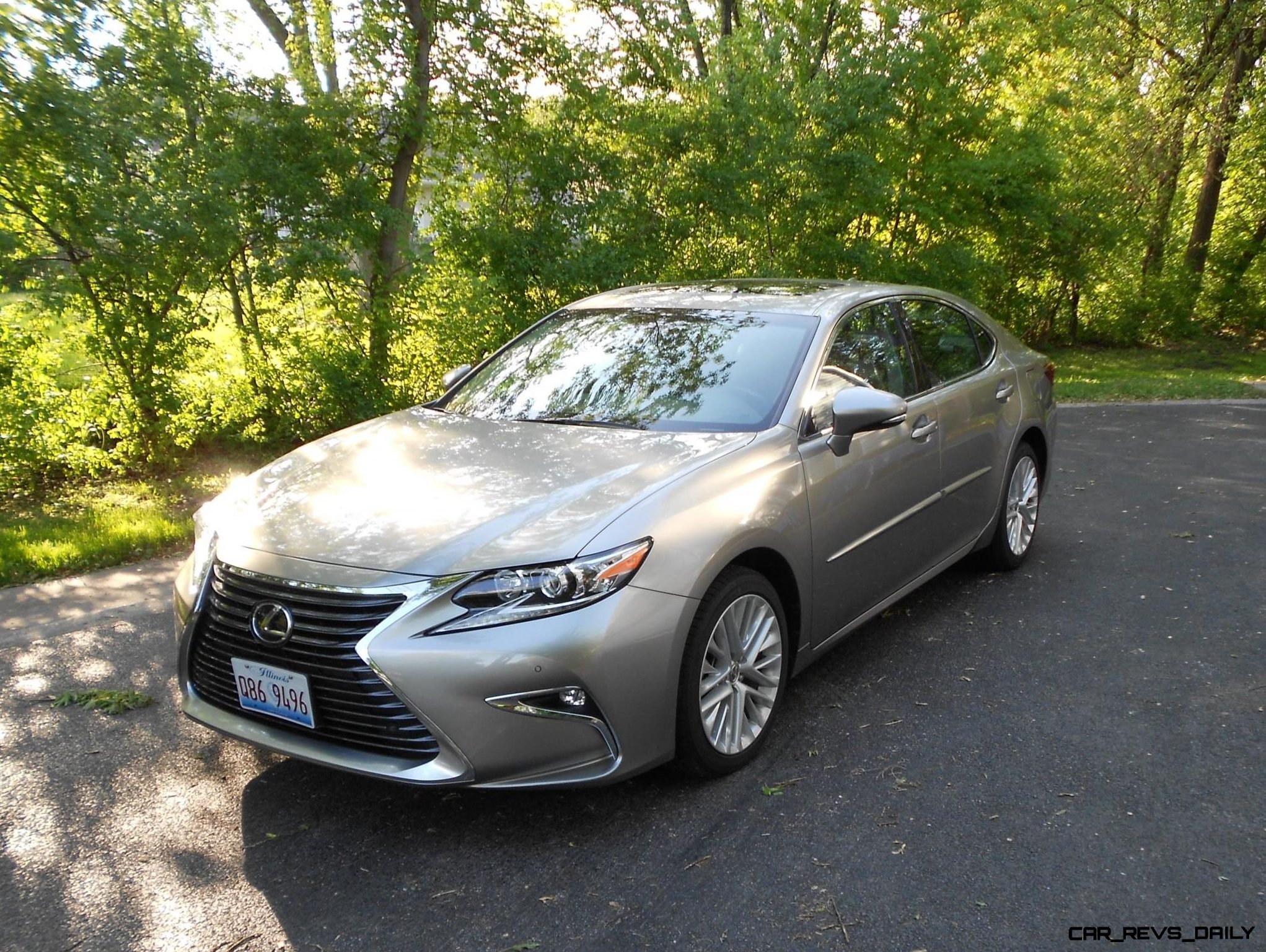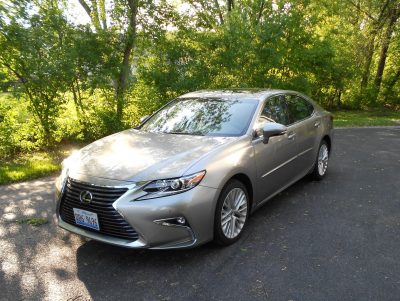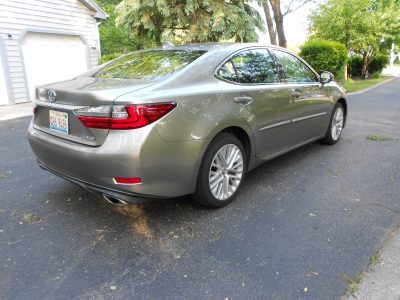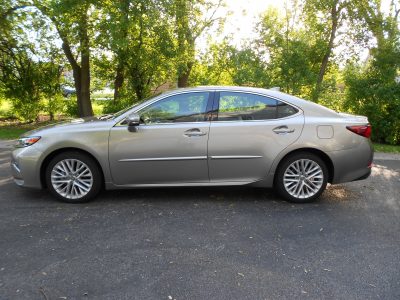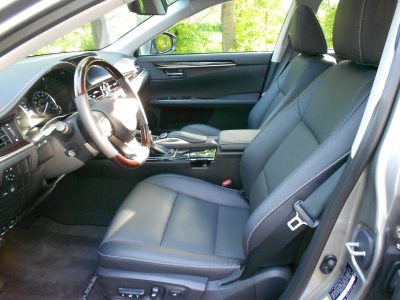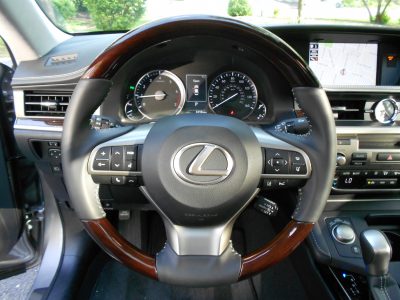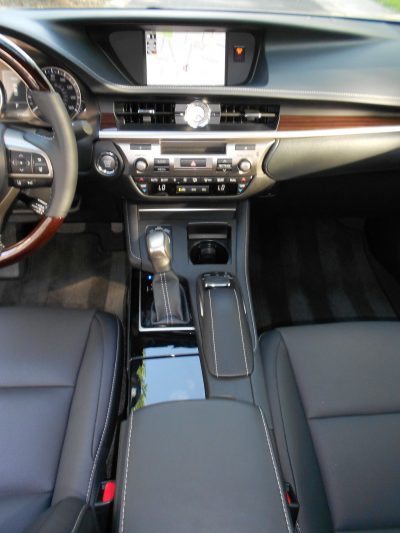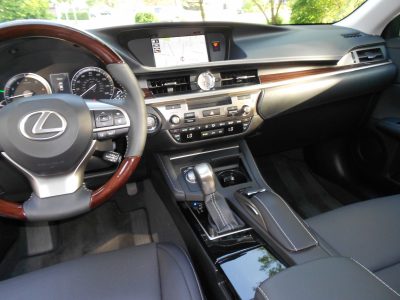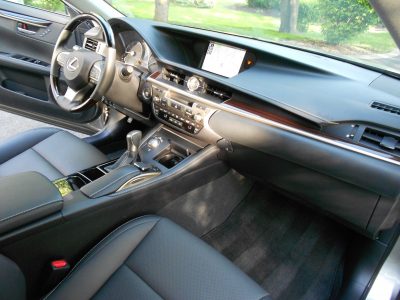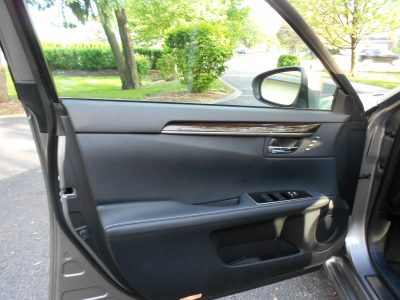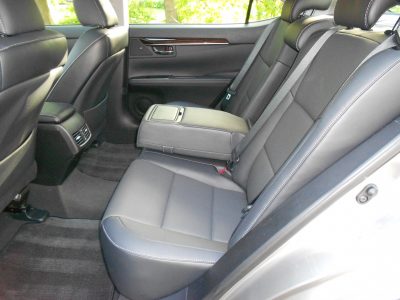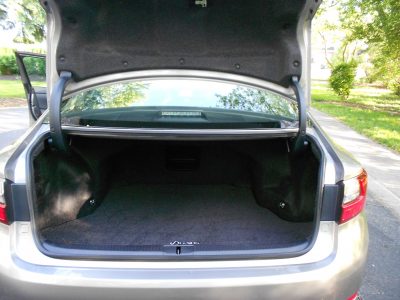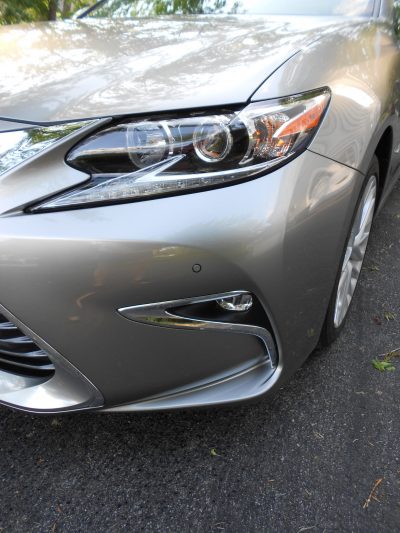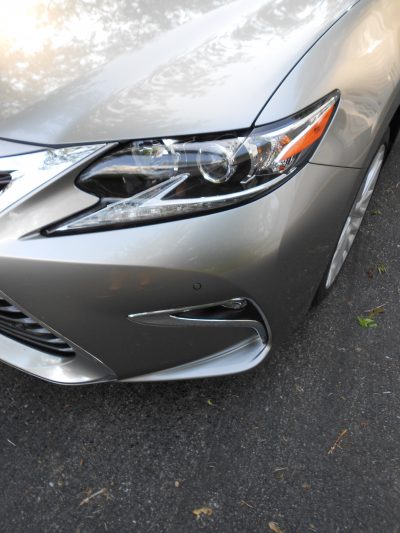If you are looking for a large, roomy, luxury vehicle with a soft comfortable boulevard ride, the Lexus ES 350 is an excellent choice. If you want a bit more driving excitement, you’ll need to look to the smaller IS or GS models.
The ES offers two powerplants. The hybrid model has a 2.5 liter inline four, with an electric motor system for high gas mileage, and the standard 3.5 liter V-6 that makes 268 horsepower, and 248 ft. lbs. of torque.
This engine provides good acceleration, and there is a control knob setting for Sport that adds a bit of zip, but we mostly used the normal setting, which is what most owners will leave it on. The power comes on smoothly and quietly, and the gas mileage is rated at 21 City and 30 Highway. We got slightly less mileage than the stated numbers.
A 6-speed automatic transmission puts the power to the front wheels, and all shifts are smooth as you’d expect. Some of the competition offer 7 or 8 gears, but that doesn’t detract from the Lexus set up. You can use the gear shift lever to change gears yourself, but those shifts are fairly lazy, so it doesn’t offer any sportiness to the driving experience. All-wheel-drive is not available.
The brake pedal felt spongy and the lack of feel isn’t confidence inspiring, but most buyers of this car probably won’t notice, and the ES stops just fine. As far as handling is concerned, the ES 350 is relaxed. On the highway, the ES tracks nicely with a nice heft to the steering effort. Road, wind, and engine noise are kept out of the cabin with a lot of sound deadening materials. There is noticeable body lean when cornering hard. 17’ wheels are standard, but the test car had the larger 18” rims with a lower profile tire, which may have firmed up the handling a bit, but still this isn’t a car you want to carve canyon roads in.
The cabin if the ES 350 is a comfortable place to spend some quality time in. Exterior dimensions say mid-size car, but interior room says large car. Like most cars, there’s plenty of front seat room, but with the ES, the rear seats stand out for very generous leg room, and enough width for three adults to sit comfortably. Head room is also ample.
The perforated synthetic NuLuxe seats are comfortable, but not very well bolstered, befitting it’s cruiser like handling manners. Real leather is available only with the Ultimate Luxury Package. The tiered horizontal dash is attractive, with the large Nav screen in the center of the stack. There are button controls for HVAC and radio. Nice wood trim runs across the dash and onto the door panels.
Standard equipment includes keyless ignition, a moonroof, HomeLink garage door opener, automatic climate control, 8-speaker HD audio system. Siri Eyes Free, Bluetooth streaming audio, and satellite radio. One can use their phone for Nav directions through the car, or opt for the $2,590 Navigation System with voice command and a Mark Levinson audio system, which our test car had. After several tries to speak two destinations into the Navigation system, I gave up. By now, that should not be an issue.
For 2017, some previously optional features are now standard, such as automatic emergency braking, adaptive cruise control, intelligent high beam headlights, and lane keep assist. Unfortunately, blind spot monitors and rear cross-traffic alerts are still optional. And I was very disappointed that a car costing as much as this one does not come with heated front seats. I’ve driven dozens of cars that cost $20,000 less that had heated seats.
Unfortunately, Lexus continues to insist that their Remote Touch control interface is a good thing. It isn’t. It’s a mouse-like controller that is very hard to operate without moving the cursor from side to side and all over the screen when trying to find the exact place you wish to click on. It’s hard to do when stopped, and very hard to do when moving.
One would think that their older core audience would object strongly to that control. Also, there isn’t any storage bin at the base of the center stack to place small items like a cell phone, house keys, or other items you want easy access to. The phone has to go into the smallish center console, where it can be plugged into a charger, but it’s not easy to get to. Still, everything in the cabin is well laid out, and the tactile feel of the switches and stalks are perfect. The whole look of the interior is elegant and befitting a car in this price range.
From a styling standpoint, the ES is a bit ho-hum. The basic profile is the same as it’s been for a few years, and last year Lexus decided to make the front end more like the cars in the rest of the line-up. Unfortunately, that meant grafting a new front fascia on to the car, with the oversized and garish spindle grill, which doesn’t work on most of their cars, and definitely not on their sedate sedans like the ES.
The base ES 350 starts at $38,900. The hybrid version begins at $41,820. The test car added for Blind Spot and rear cross-traffic alerts for $500. The 18” wheels added $880. The Navigation and Mark Levinson Audio package adds a whopping $2590. Intuitive Parking Assist adds $500. Another $730 for the Premium Package which includes memory driver’s seat, outside mirrors and steering wheel, power tilt and telescope wheel, wood trim, and keyless remote entry liked memory. The leather and wood trimmed steering wheel costs $300, carpeted trunk mat costs $105, illuminated door sills cost $379, and $199 for body side moldings. With freight, the bottom line was $46,068.
Aside from the few criticisms noted above, the ES 350 is an outstanding car. It wouldn’t be my first choice from the Lexus line-up, because I prefer a car with more driving excitement. But I refuse to criticize a vehicle for being exactly what it was designed for, and that satisfies the audience who want their cars like this.
ES350 drives well, has enough power, and has a quiet and very comfortable roomy interior. The quality is unquestionable.
It’s what a traditional Lexus is known for. And that’s a good thing.
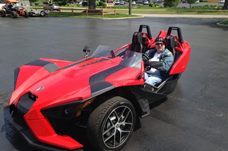
Ken “Hawkeye” Glassman has been a motor journalist for over 30 years, reviewing automobile, as well as motorcycle ride reviews and accessory reviews.
His car articles have appeared in Robb Report Magazine, Autoguide.com, Car-Revs-Daily.com and other media. His work has also appeared in Road Bike Magazine, Motorcycle Tour and Cruiser, SpeedTV.com, MotorcycleUSA.com and others.
As motorcycle columnist for The Daily Herald in suburban Chicago, the paper became the only major circulation newspaper in the country to have a separate weekly section devoted to motorcycles. Later he wrote a weekly column for Cyclefocus Magazine.

